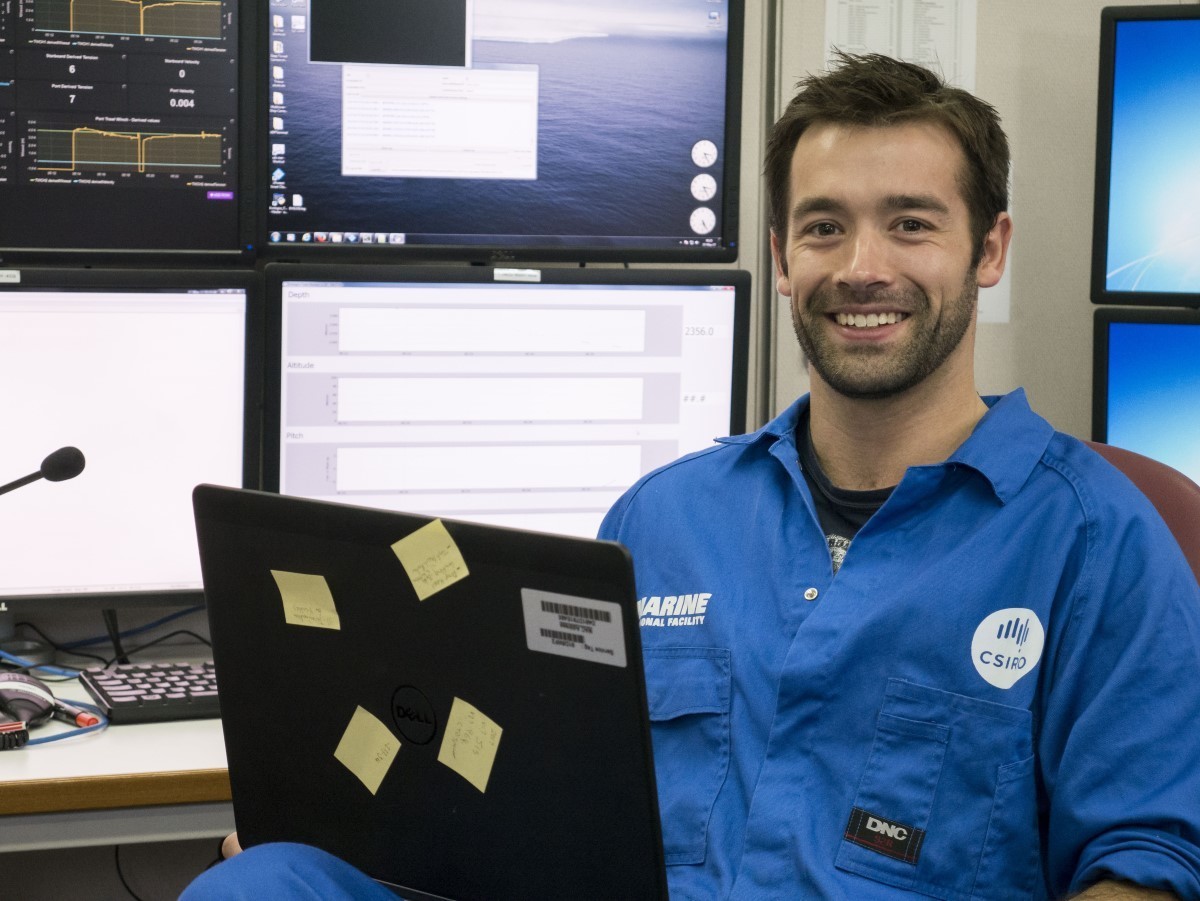May 17, 2017
Day 3: Asher Flatt, onboard communicator
 The first demersal trawl has been cast into the ocean! Last night a test trawl was put down to 1500 metres and then brought back up soon after. Inside the net was the first catch of the voyage, which consisted of about four squid and some jellies and a baby eel among other things. Not the most exciting catch but a good beginning and the labs were a flurry of activity as specimens were packed in jars, labelled and stored away.
The first demersal trawl has been cast into the ocean! Last night a test trawl was put down to 1500 metres and then brought back up soon after. Inside the net was the first catch of the voyage, which consisted of about four squid and some jellies and a baby eel among other things. Not the most exciting catch but a good beginning and the labs were a flurry of activity as specimens were packed in jars, labelled and stored away.

And the waiting continued as a second test trawl was sent into the pelagic (open ocean) zone this morning, on the very edge of the Freycinet Commonwealth Marine Reserve. We are sending these nets so deep that the sensors that usually operate to give data about the net's position, and how it is sitting in the water, won't be able to operate. Once it reaches 4000 m, the net is flying blind and it is up to our mapping technology to ensure beforehand there will be no unexpected snags. We waited in hope . . . and were rewarded with a successful first 'real trawl' which has gone down to nearly 3000 m!


Seasickness and the science behind losing your lunch at sea
I awoke this morning with less of a serene feeling and more of a stomach churning feeling. The pitching and rolling of the ship coupled with the sounds of the water sloshing about right next to my head had tied my stomach in knots and it was with weak knees that I made my way up stairs to search for some motion sickness medication.
Seasickness and/or motion sickness is still a remarkably poorly understood phenomenon considering how long it has been the bain of all at sea (some more than others). Charles Darwin had it on his famous trip around the world, as have countless others since the first sailors stepped into a boat.
Onboard electronics officer Will Ponsonby recounts his first encounter with seasickness . . .
"It was on one of RV Investigator's first series of sea trials out of Hobart in late 2014. We left port knowing there was rough weather, but saw it as a good opportunity to 'test' out the vessel's ability. This was my first introduction on a ship this size in bad weather, and it didn't take long before I was laying horizontal in bed, ingesting copious amounts of ginger and whatever other medications and remedies were handed out by ships officers.

After a while the weather picked up more, which woke me as my head and feet were sliding into the wall and bed end. I then proceeded to look at the horizon from the bridge (25 m above water line) as this was another 'trick' to help with sea sickness. The bridge offered little comfort, there the horizon was rarely seen, between the wall of water on one end of the pitch and grey sky on the other. The officer on watch similarly offered little comfort by stating, after many years ( more than 20) at sea, he couldn't remember being in a squall this rough and was questioning his chosen career path as a sailor. I returned to my bunk to 'sleep' again and wondered if I had made the right choice in changing careers. After having now been with CSIRO for three-and-a-half years (this being my 14th trip with the Marine National Facility supporting science operations) I quite like it now."
A conflict of the senses
The theory behind the phenomenon of seasickness is relatively simple. Your brain's predictive system for keeping your body in balance is adjusted for land. When it is placed in a novel environment, such as on board a boat, however, where you have the movement of the ocean to contend with, then what it knows comes into conflict with the reality of the new situation and nasea occurs. But it's still unknown why this should cause nausea! One theory is that the conflict between the senses simulates the effects of poison on the body (think of the spinning from drinking too much alcohol) and so the natural reflex is to attempt to get rid of that poison through projectile means.
Aparently it takes about 36 hours to get your 'sea legs' so here's hoping that tomorrow will be a better day!
More about Freycinet Commonwealth Marine Reserve
- Log in to post comments
